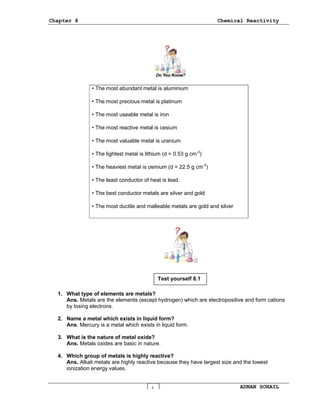- The document discusses various properties of metals such as aluminium being the most abundant metal, platinum being the most precious metal, and iron being the most usable metal. It also discusses properties of specific metals like lithium being the lightest metal and lead being the poorest conductor of heat.
- Metals are elements that form cations by losing electrons and exist as electropositive elements, except for hydrogen. Mercury is an example of a metal that exists in liquid form. Metal oxides are generally basic in nature.
- Alkali metals are the most reactive group of metals due to their large size and low ionization energy values. Properties like malleability, ductility and reactivity can also vary between





